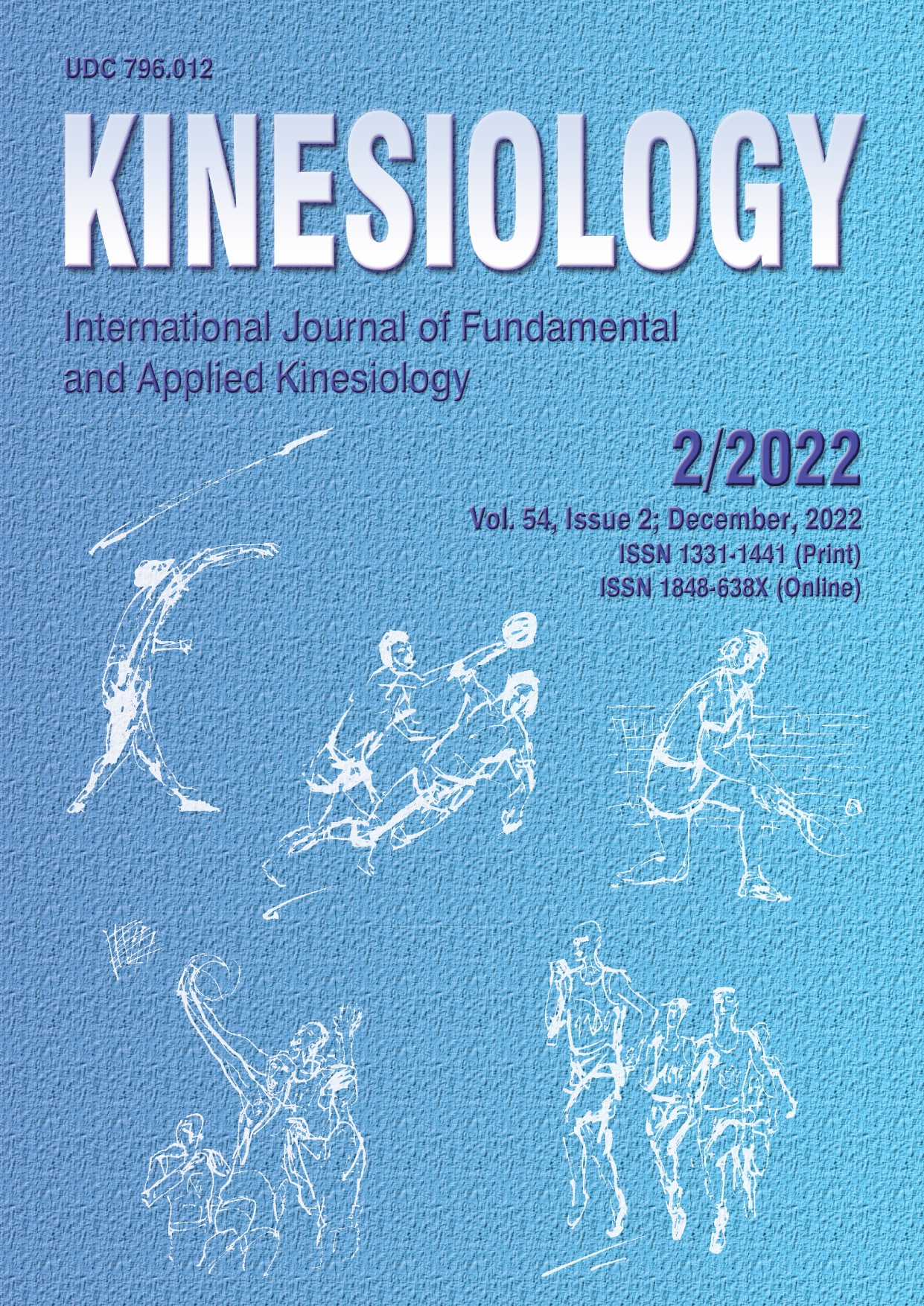SHOULDER ABDUCTION STRENGTH IS CORRELATED WITH ACROMIOHUMERAL DISTANCE IN PATIENTS WITH ACUTE SUBACROMIAL IMPINGEMENT SYNDROME SYMPTOMS BUT NOT WITH SUPRASPINATUS TENDON THICKNESS REGARDLESS OF DISEASE STAGE
Abstract
We aimed to investigate the relationships of isometric and eccentric shoulder abduction strength with acromiohumeral distance and supraspinatus tendon thickness based on the disease stage in patients with subacromial impingement syndrome. Eighty-two patients with subacromial impingement syndrome were assessed. Acromiohumeral distance and supraspinatus tendon thickness were measured using ultrasonography. Isometric and eccentric shoulder abduction strength were measured with a hand-held dynamometer. Spearman’s correlation coefficients were calculated. Isometric (rho = 0.428, p=.021) and eccentric (rho = 0.487, p=.007) shoulder abduction strength showed moderate correlations with acromiohumeral distance in patients with acute symptoms (n = 29). There was no relationship between acromiohumeral distance and abduction strength in patients with chronic symptoms (n = 53) (p>.050). Supraspinatus tendon thickness showed no significant correlation with abduction strength (p>.050). These findings suggest that the relationship between acromiohumeral distance and abduction strength differs according to disease stage. However, supraspinatus tendon thickness was not correlated with abduction strength regardless of disease stage. In patients with acute subacromial impingement syndrome symptoms increasing shoulder abduction strength may be a potential strategy to improve acromiohumeral distance.
Key words: muscle strength, rotator cuff, rehabilitation, ultrasonography
Downloads
Published
How to Cite
Issue
Section
License

This work is licensed under a Creative Commons Attribution-NonCommercial 4.0 International License.
At Faculty of Kinesiology we recognize that access to quality research is vital to the scientific community and beyond. Kinesiology is non-profit journal and all costs of publishing and peer review process are covered by the publisher itself or other funding sources like Ministry of Science and Education of the Republic of Croatia. Full text papers are also available free of charge at http://hrcak.srce.hr/kineziologija. There are no restrictions on self archiving of any form of paper (preprint, postprint and publisher's version).
Articles are distributed under the terms of the CC BY - NC 4.0
Kinesiology does not charge any fees to authors to submit or publish articles in our journal.


